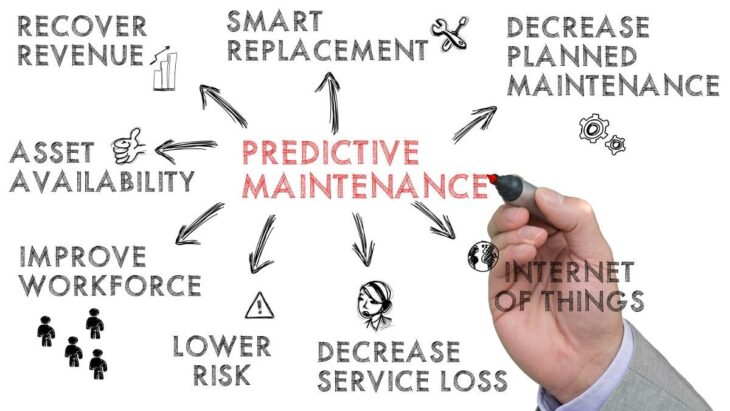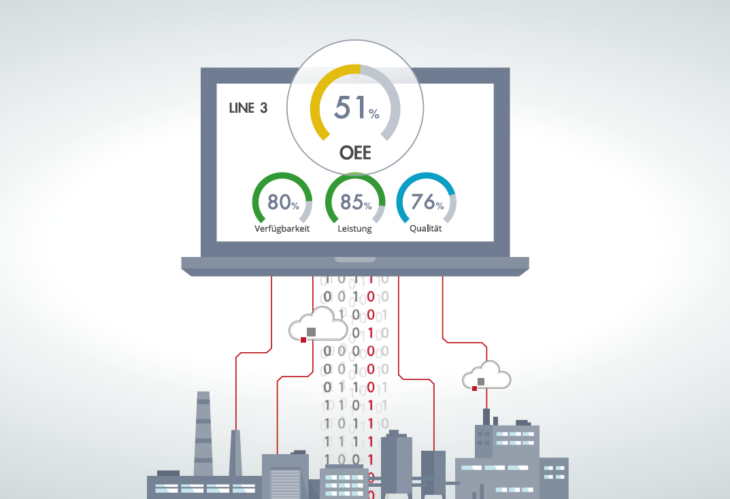As your business grows, so does the asset base. Then this brings a whole set of challenges, for instance, how do you keep track of service intervals, repairs, and replacements while ensuring value for money?
The only way out is investing in a CMMS system to track the maintenance of assets and their inventory.
Contents
But first, what is CCMS?
CMMS stands for Computerized Maintenance Management System and some people call it Enterprise Asset Management (EAM) system.
However, there’s a difference between the two. And today, we shall focus on the CMMS system.
CMMS helps in scheduling asset maintenance jobs. It makes the employee’s work easy and more effective. Further, it maintains all records relating to an asset.
But that’s not all! CMMS helps you create and track work orders. All this improves business daily operations.
Let’s explain this with an example.

img source: comparethecloud.net
Assume you own a vehicle that requires maintenance regularly. Well, it’s not hard to remember to change the oil every three months or when it requires maintenance.
Now let’s say you have 30 delivery vehicles. Can you remember these maintenance details for every vehicle? Of course not. What do you do? Probably you’ll start writing every detail in a diary, like when you last changed the oil or the next maintenance or servicing date.
So, what happens if you have 100 or more vehicles? Do you still record this information in a diary? What if you lose the diary? This is where the CMMS system comes to your rescue.
According to Limble, CMMS helps your business to reduce repair and maintenance costs by sorting out work orders and processes. Further, it gives knowledge into the status of every asset, machine, and equipment in your firm. It does so by ensuring timely repairs, servicing, and maintenances on all business assets.
What Are the Benefits of CMMS Systems?
1. Preventive Maintenance

img source: precisionitconsulting.net
In the production industry or a production plant, every machine or equipment is expensive. Therefore, if any machine grinds to a halt or stops working, it affects business operations and profits. Further, the costs of fixing and repairing this equipment are also high.
As the business owner, you don’t want this to happen in your firm, would you? The only solution is to invest in a CMMS system. With this, you’ll undertake preventive rather than reactive maintenance to avoid disruptions in your manufacturing processes.
Remember, if a piece of equipment isn’t working, then the business cannot complete the production process. If you don’t have products to take to the market, the sales will decline to lead to a business loss.
2. Better Resource Allocation and Utilization
A CMMS system helps organizations to make intelligent decisions on resource allocation and utilization. For instance, the CMMS system helps you to know which office branch is short on inventory or which has more than it requires. In this way, you can redistribute business assets to ensure there’s no shortage of idle machines lying in any office. This improves business productivity and helps you to save on costs.
3. Create Schedule Maintenance

img source: blogs.3ds.com
CMMS system helps you schedule maintenance of fixed business assets. Planning maintenance activity works to improve the performance of any machine. But that’s not all, it ensures that maintenance or repair activity doesn’t impact the overall business goal to increase sales through timely production.
With this system, you can create weekly, monthly, or annual schedules depending on your preferred maintenance routine. Further, you can create reminders to prevent forgetfulness when undertaking maintenance activities.
4. Foster Collaboration and Teamwork
Do you want things to be done efficiently in your company? Then invest in collaboration and teamwork between employees. When people work as a team, they can share ideas helping them to come up with a better solution to the problem at hand.
But how does CMMS improve teamwork and collaboration? Well, workers facing a challenge can use the system to see how team members solved similar problems in the past.
Further, CMMS helps businesses that work in rotational shifts to remain connected by transferring knowledge through the system. It also ensures maximum transparency and alignment by offering clear visibility of the specific activities of every team member.
5. Less Downtime

img source: automation.com
Maybe you’re wondering, what is downtime and how does it affect business operations? Well, if a machine breaks down, it’ll take time to fix or repair it. This is what is known as downtime. It’s even worse if the spare parts aren’t available on hand.
Well, the CMMS system helps you to order necessary parts before the scheduled maintenance date. With preventive maintenance, the probability of machines breaking down is close to none. And in the unfortunate event, this happens, you’ll have necessary spare parts which effectively reduces downtime.
6. Improves Workplace Safety Conditions
It is the responsibility of management teams to provide a safe and healthy working environment to their employees. And yes, employees can sue for damages if they suffer damages from an unsafe working environment.
Well, providing a safe and secure working environment is among the crucial points of CMMS software. But how? It identifies the problematic areas of machines and equipment allowing management teams to fix them before they wreak havoc in the workplace.
Remember, identifying and fixing problems on time reduces the possibility of accidents.
7. Asset Location

img source: paddle.com
Do you ever forget where you’ve kept some of your belongings? Well, large companies often grapple with challenges. Having a big corporation is amazing, but it’s difficult when the management starts to forget where their assets are kept.
But not anymore! A CMMS system helps businesses to effectively locate their assets. And remember, business assets comprise machines, equipment, products, computers, and employees.
Conclusion
Investing in CMMS software is the best decision that businesses can make. It helps take care of business assets by maintaining timely maintenance and repair schedules. All these work to improve productivity. Further, the system ensures that employees are trained to act on the prompts from the system. Even better, businesses can implement CMMS systems with very little tech knowledge.
